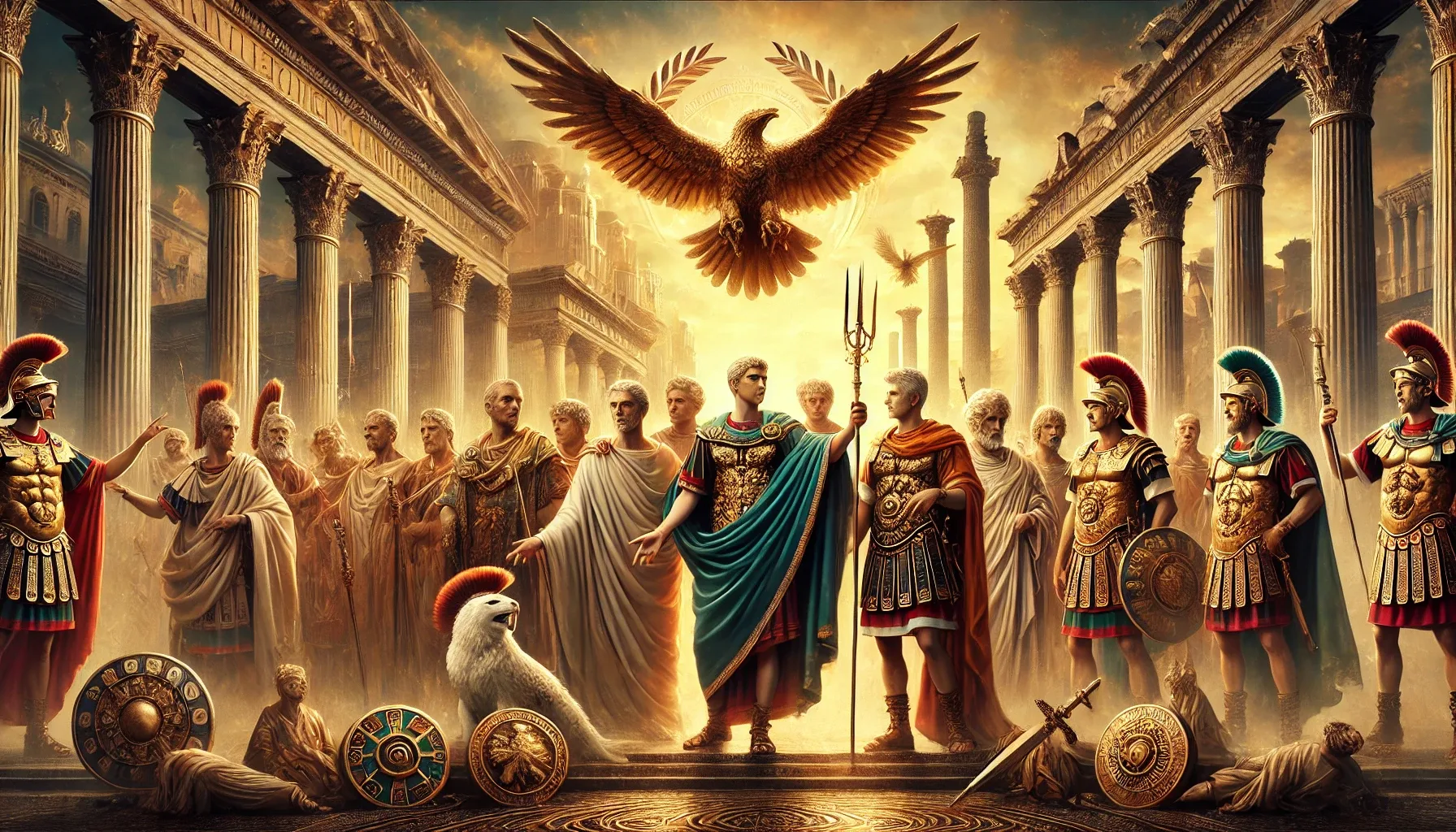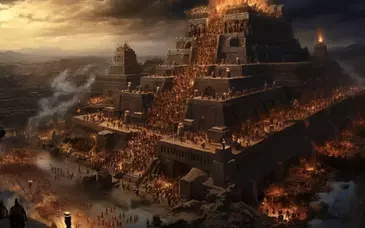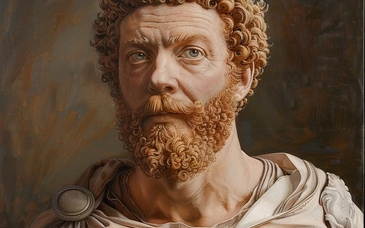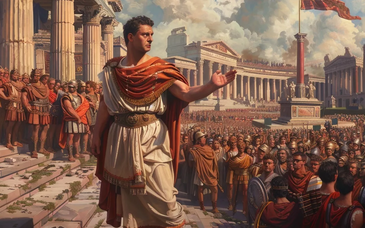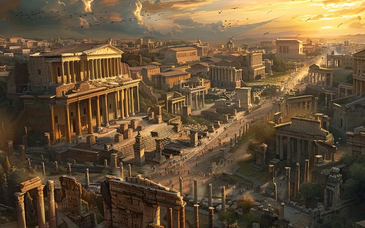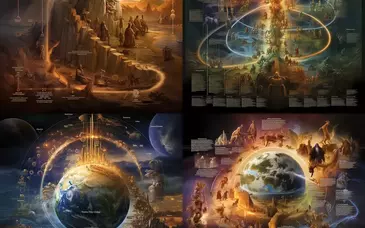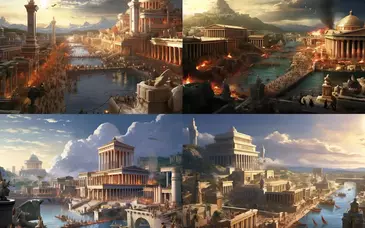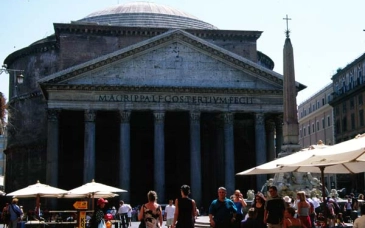The Roman Empire, one of the most influential civilizations in human history, was shaped by the reigns of its emperors. From Augustus to Justinian, these rulers governed an empire that stretched across Europe, the Middle East, and North Africa. They were not only political and military leaders but also figures whose actions often intersected with religion and shaped the course of biblical history.
The First Emperor: Augustus (27 B.C.–14 A.D.)
Gaius Octavius, later known as Augustus, was the first emperor of Rome. His reign marked the end of the Roman Republic and the beginning of the Roman Empire. Augustus established the Pax Romana, a period of relative peace that allowed Christianity to spread centuries later.
In the Bible, Augustus is directly mentioned in Luke 2:1, which states:
"In those days Caesar Augustus issued a decree that a census should be taken of the entire Roman world."
This decree led Joseph and Mary to travel to Bethlehem, fulfilling the prophecy of the Messiah's birthplace (Micah 5:2).
Tiberius (14–37 A.D.): The Emperor During Jesus’ Ministry
Tiberius succeeded Augustus and was emperor during the ministry, crucifixion, and resurrection of Jesus Christ. His reign is referenced in Luke 3:1, which dates John the Baptist's ministry to the 15th year of Tiberius’ rule. Though Tiberius himself never directly interacted with Jesus, Pontius Pilate, the governor of Judea, acted under his authority when he sentenced Jesus to death.
Caligula (37–41 A.D.): The Tyrant Emperor
Caligula is remembered for his erratic behavior and self-deification. His reign was marked by excessive cruelty and extravagance. Though not mentioned in the Bible, his demand to erect a statue of himself in the Jewish Temple in Jerusalem almost incited a rebellion among the Jews, highlighting the tension between Roman authority and Jewish religious traditions.
Claudius (41–54 A.D.): The Benevolent Reformer
Claudius expanded the empire and improved its administration. His reign is mentioned in Acts 18:2, where Paul meets Aquila and Priscilla, a Jewish couple expelled from Rome by Claudius' edict:
"He had ordered all Jews to leave Rome."
This event underscores the challenges early Christians faced under Roman rule.
Nero (54–68 A.D.): The Persecutor of Christians
Nero is infamous for his persecution of Christians, whom he blamed for the Great Fire of Rome in 64 A.D. According to early Christian tradition, both the apostles Peter and Paul were martyred during Nero’s reign. The Book of Revelation, written later, is thought to encode Nero's name in the number 666, symbolizing ultimate evil and opposition to God (Revelation 13:18).
The Year of the Four Emperors (69 A.D.)
The chaotic year 69 A.D. saw four emperors—Galba, Otho, Vitellius, and Vespasian—rise and fall in quick succession. This turmoil highlighted the fragility of Rome's political system. Vespasian eventually emerged victorious and founded the Flavian dynasty.
Vespasian and the Destruction of Jerusalem (69–79 A.D.)
Vespasian and his son Titus led the Roman campaign during the Jewish Revolt. In 70 A.D., Titus destroyed the Second Temple in Jerusalem, fulfilling Jesus' prophecy in Matthew 24:2:
"Truly I tell you, not one stone here will be left on another; every one will be thrown down."
This event marked a turning point in Jewish history and profoundly impacted early Christianity.
Constantine the Great (306–337 A.D.): The Christian Emperor
Constantine is one of the most significant emperors in Roman and Christian history. In 313 A.D., he issued the Edict of Milan, granting religious tolerance throughout the empire and ending the persecution of Christians. According to tradition, before the Battle of the Milvian Bridge, Constantine saw a vision of a cross with the words “In this sign, conquer.” He later converted to Christianity and convened the Council of Nicaea in 325 A.D., which established key Christian doctrines.
Constantine also moved the capital of the empire to Byzantium, renaming it Constantinople (modern-day Istanbul). This city would become the center of the Eastern Roman (Byzantine) Empire and a hub of Christian theology.
Julian the Apostate (361–363 A.D.): The Pagan Revivalist
Julian, known as "the Apostate," was Constantine’s nephew. He sought to restore paganism and undermine Christianity, which had grown dominant under his predecessors. Despite his efforts, Julian’s reign was short-lived, and his death marked the end of pagan revival attempts in the empire.
Theodosius I (378–395 A.D.): The Defender of Orthodoxy
Theodosius I made Christianity the official religion of the Roman Empire and suppressed pagan practices. He is credited with solidifying the Nicene Creed and ending the Arian controversy, which questioned the divinity of Christ. Theodosius' reign laid the foundation for a Christian Europe.
The Fall of the Western Roman Empire
By the 5th century, the Western Roman Empire faced invasions from Germanic tribes, economic decline, and political instability. The deposition of Romulus Augustulus in 476 A.D. by the barbarian king Odoacer is traditionally seen as the end of the Western Roman Empire. However, the Eastern Roman Empire, or Byzantine Empire, continued to thrive for nearly a thousand more years.
Justinian I (527–565 A.D.): The Last Great Emperor
Justinian sought to revive the glory of Rome through military campaigns, architectural achievements, and legal reforms. His most notable accomplishment was the construction of the Hagia Sophia, a masterpiece of Byzantine architecture. Justinian also codified Roman law in the Corpus Juris Civilis, which influenced legal systems for centuries.
In a religious context, Justinian's reign was marked by his efforts to unify Christianity. He often clashed with various Christian sects and sought to suppress heresies, ensuring the dominance of Orthodox Christianity.
Biblical Legacy of the Roman Empire
The Roman Empire is intricately tied to the narrative of the Bible. From the census of Augustus to the crucifixion under Tiberius, Roman emperors influenced events central to Christianity. Revelation's apocalyptic visions often reflect the persecution and struggles of Christians under Roman rule, portraying the empire as both a political and spiritual adversary.
Despite its decline, the legacy of the Roman Empire endured through its laws, governance, and the spread of Christianity. The empire served as the stage for biblical events that continue to shape the world today.
